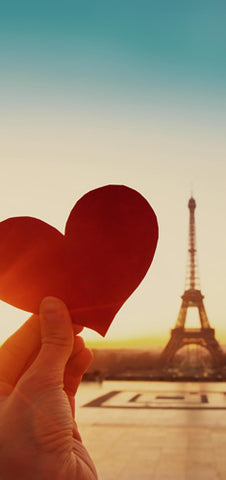(Back to the Loire Valley Wine and Castle Booking Page)
Monday and Thursday
Chambord is the biggest Loire castle, yet was only built as a hunting lodge for King Francois I. It's been suggested, but not proven, Da Vinci had a hand in its design, but it's attributed to Phillipe Delorme.
Unique architectural features such as the minaret-like spires and grand double helix staircase add to its distinction. Onsite is the Museum of Nature and Hunting, and an especially rare collection of tapestries.

Designed by the same architect who created Blois, has stayed in the Count of Cheverny's family almost continually since it was built in the 16th century. Intact interiors and priceless antiques are a must-see, but the famed hunting dog kennels on the grounds are the biggest draw, open for public viewing right next to the extensive kitchen gardens.
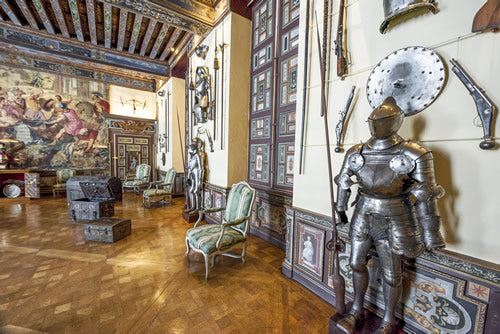
Blois was home to François I and the first Bourbon king, but by the mid 1600's, was a place of exile for those not strictly of the first court. It's particularly known for its incredible staircase seated inside a multi story cupola. It was nearly demolished in the 1830's, but was ruled a national monument and restored. A popular exhibit is that of Catherine de Medici's poison cabinet in a secret room.
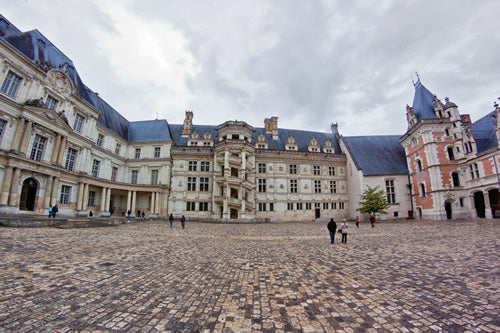
Tuesday and Friday
Built on the site of an old mill on the River Cher, Chenonceau is most known for the arched bridge at its base joining the château to the river's opposite bank.
A couple of centuries of crumbling disrepair was finally addressed right after World War II by the current owners (the family Menier, heirs to a chocolate-making fortune). Other than the Royal Palace of Versailles, it is the most visited château in France.
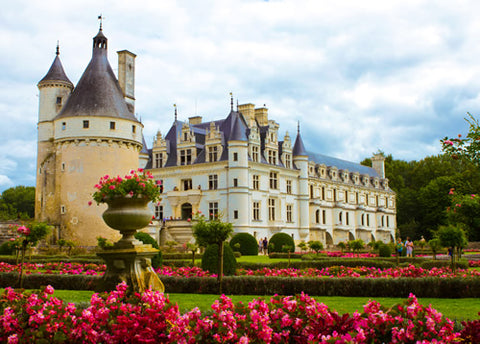
The village of Amboise is anchored by the grand Château Amboise, along the river Loire, just 20 minutes from Tours. In recent times, the château Amboise has been partially restored and preserved, but has never returned to its 16th century glory, when Leonardo Da Vinci and Italian craftsmen lived on the grounds, building to the specifications of then King Francis I. It's the only castle still owned by heirs to the French throne.

Clos Luce is a stately manor house with the distinction of being Da Vinci's last home. Connected to the château Amboise via an underground tunnel, it's now a museum housing 40 assembled models based on the genius artist/inventor's mechanical plans. The grounds feature gardens and an invaluable collection of Da Vinci's botanical sketches.

Wednesday and Saturday
Chateau D'Azay-Le-Rideau is dramatically situated on an island in the Indre river. The plush interiors are decorated in the Italian Renaissance style popular when it was first built in the 16th century. One of the newest exhibits is in the attic, showing the complicated beam and buttress design needed to hold the massive roof.
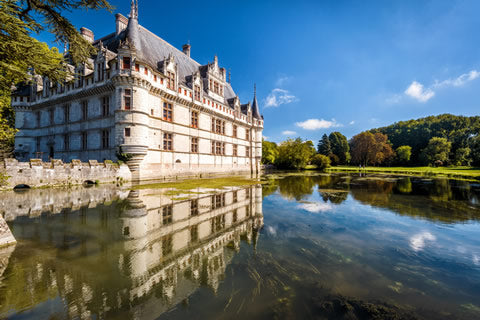
Villandry features the finest formal gardens in Europe. The dilapidated gardens and castle were restored to their 16th century glory in the 1900's, by a wealthy American heiress, Ann Coleman, and her French husband Joachim Carvallo. It takes 8 gardeners working full time to plant, prune and care for the 60,000 vegetable plants and 45,000 other varietals set out each year.
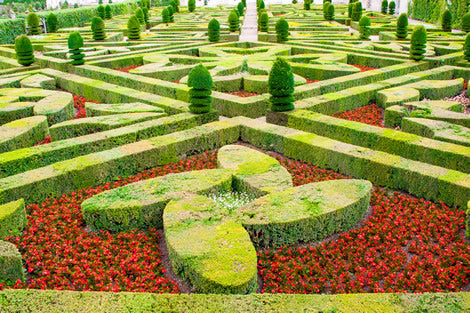
Rivau is famous for stabling and supplying the Royal horses, and for being a stop for Joan of Arc along her crusade. The castle 's fanciful adornments led to the creation of the fairy tale garden featuring rare and exotic plants, among them 300 rose varieties. An eclectic collection of modern and classical statuary dots the grounds.

